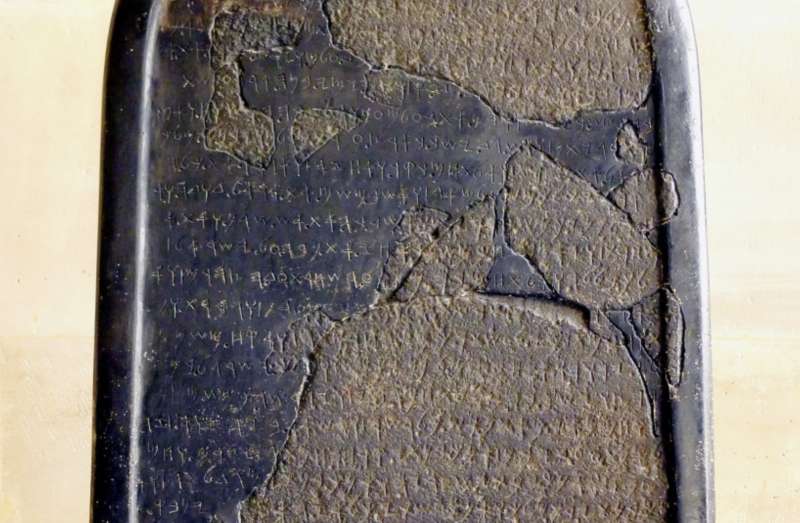
Stele di mesha3 Dago fotogallery
Carved from black basalt, the Mesha Stele (also called the Moabite Stone) measures about 3 feet tall and 2 feet wide. It contains 34 lines of text, with the possible "House of David" reference appearing on its 31st line. King Mesha set up the victory stela in his capital, Dibon (modern Dhiban in Jordan).

Luca. La stele di Mesha Studium Biblicum Franciscanum
(2 Kings 3:4-27). The king's name: "Mesha" is based on the Hebrew word "to save", but it has also been suggested that his name may be related to the Hebrew "Moshe" (Moses). While his personality is rather obscure, he left a clear message on to the stone, which gives us a glimpse of historical events, which were important for the Moabite Kingdom.

Mesha Stele Wikipedia, the free encyclopedia Ancient history
The Mesha Stele One of the most important early discoveries in Biblical Archaeology was of the "Mesha Stele" in what is now modern-day Jordan. This massive stone monument from the 9th century BC was inscribed in an ancient language called Moabite, very similar to Hebrew, and it tells the story of 2 Kings 3 from the perspective of King Mesha of Moab, an enemy of Israel and Judah.
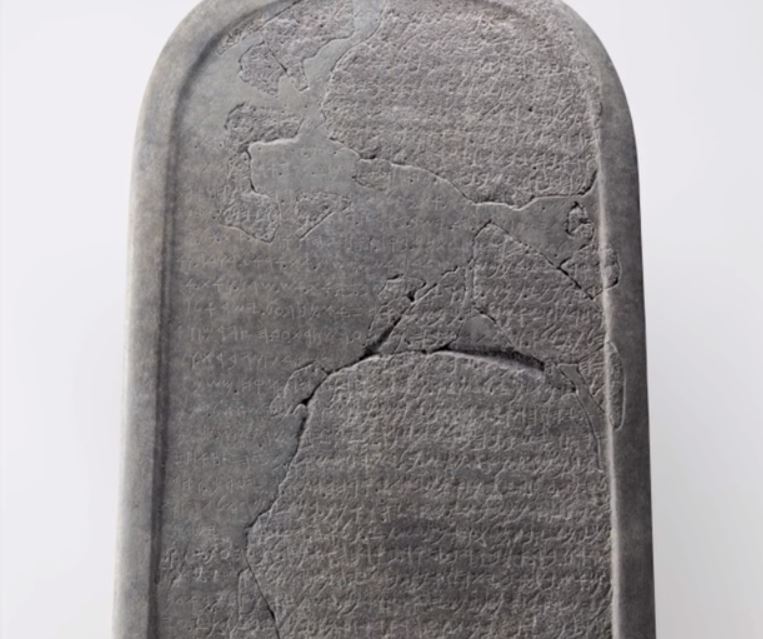
Expo Mesha, la stèle brisée puis raconte l'Histoire The
La stele di Mesha (nota nel XIX secolo come pietra moabita) è una pietra in basalto nero, situata in Giordania, che riporta un'iscrizione effettuata nel IX secolo a.C. da re Mesha dei Moabiti .

8 Archaeological Discoveries That Support The Bible
Mesha Stele (Moabite Stone), 840 B.C.E ., Louvre Museum. Wikimedia adapted. In Numbers 32, we read a long and detailed story of negotiations meant to secure the region of the Transjordan (the area to the east of the Jordan river) for the tribes of Reuben and Gad. After meeting with a furious response from Moses when the topic is first broached.

The Israel Stele of Merneptah. c. 1210 BC, currently located in the
MESHA STELEMESHA STELE , an inscribed basalt stele, measuring about 40 inches (one meter) high and about 28 inches (70 centimeters) wide, erected by *Mesha, king of Moab, at Dibon (today, Dhībân), probably in the third quarter of the ninth century, b.c.e. The shape of the stele, with a flat base and rounded top, is characteristic of those erected by kings of that period.
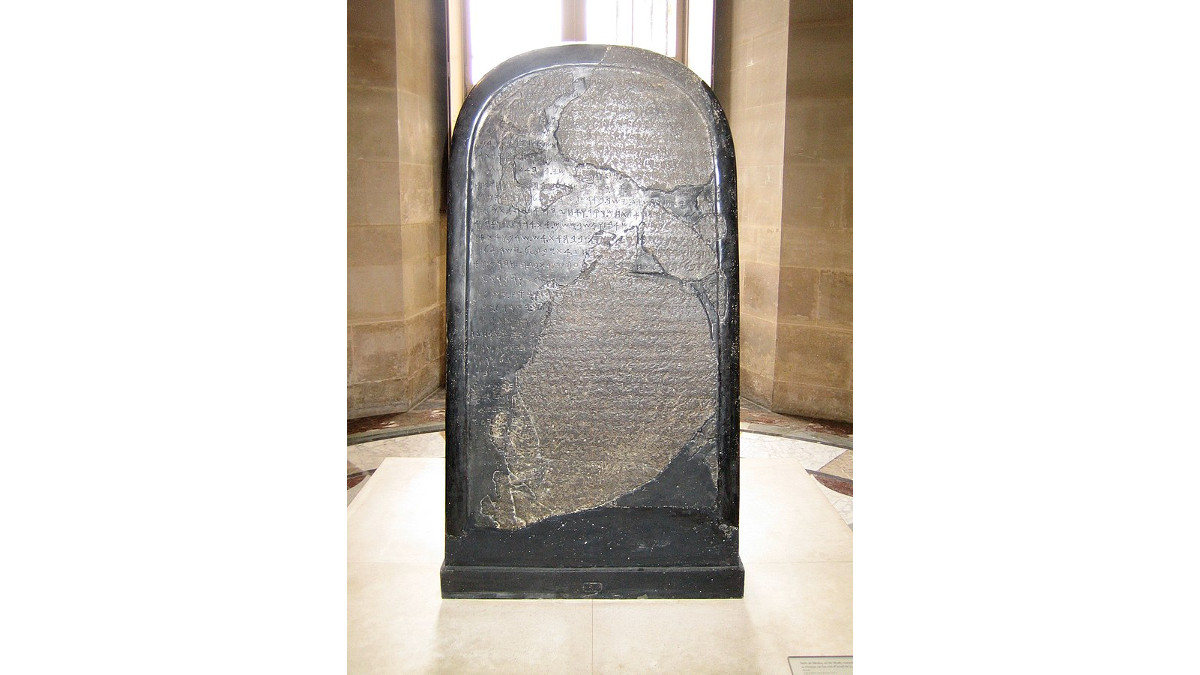
Recenti studi sulla stele di Mesha evidenziano riferimenti a Re David
The Mesha Stele details the victories of King Mesha of Moab over the kingdoms of Israel and Judah. It was found at Dibon, Moab's capital, and dated to the ninth century B.C.E. The stone contains a possible reference to the "House of David" as Judah's rulers, which seems to support King David as a historical figure. Thanks to recent photographic evidence, our authors argue that this.
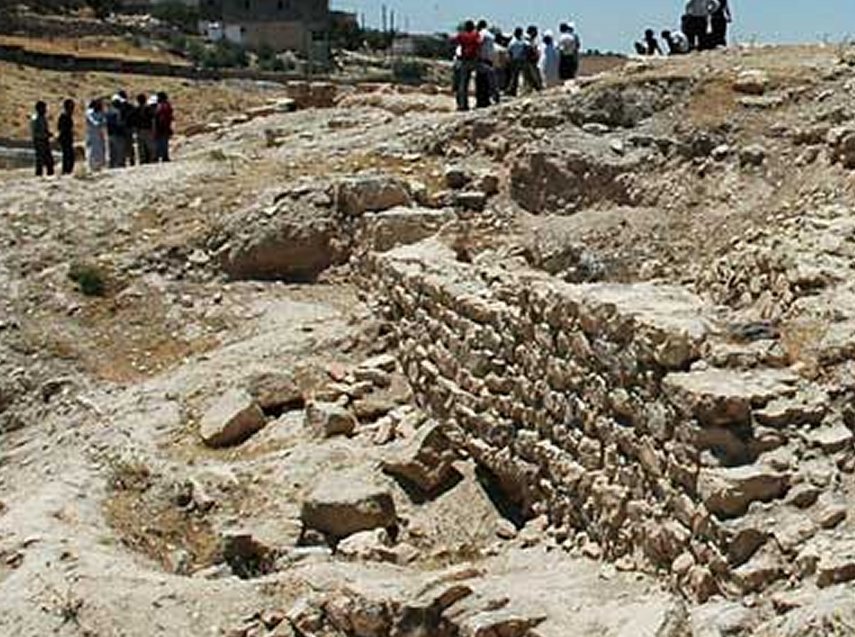
Mesha Stele One Of The Most Valuable Biblical Artifacts Ancient Pages
R Replicas of Mesha Stele (4 F) Media in category "Mesha Stele" The following 29 files are in this category, out of 29 total. A history of all nations from the earliest times; being a universal historical library (1905) (14782185595).jpg 1,512 × 2,442; 721 KB Brockhaus and Efron Jewish Encyclopedia e11 477-0.jpg 1,082 × 1,655; 527 KB
The Tel Dan Stele a fragmented stele discovered in Israel in 1992
The Mesha Stele, also known as the Moabite Stone, is a stele dated around 840 BCE containing a significant Canaanite inscription in the name of King Mesha of Moab (a kingdom located in modern Jordan ).

THROUGH THE LAND OF ISRAEL III July 2012
The Mesha Stele,also known as the Moabite Stone,is a black basaltmonument bearing an inscription by the ninth century B.C.E.MoabiteKing Mesha. Discovered in 1868 at Dhiban, Jordan(biblical "Dibon," the capital of Moab), the inscription of 34 lines is the most extensive document ever recovered referring contemporaneously to ancient Israel.
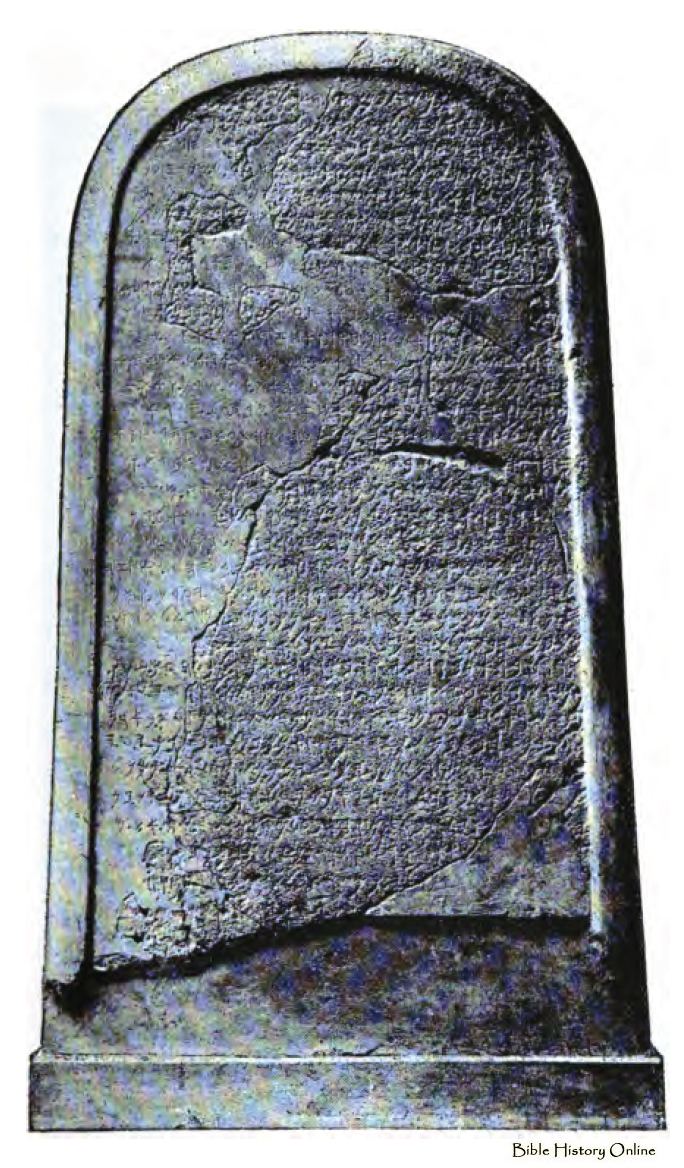
Mesha Stele Alchetron, The Free Social Encyclopedia
The Mesha Stele and King David of the Bible Does the ninth-century Mesha Stele mention King David of the Bible? In the ninth century BCE, King Mesha of Moab set up a stela in his capital Dibon. It chronicled his military victories over his enemies, including Israel and possibly Judah, called the "House of David."

La Stèle de MESHA (Moabite Stone) et la BIBLE AgoraVox le média citoyen
The Moabite Stone, otherwise known as the Mesha Stele, contains an ancient inscription by Mesha, King of Moab during the late 9th century BCE, elements of which match events in the Hebrew Bible. The inscription describes two aspects of how Mesha lead Moab into victory against ancient Israel.

The Mesha Stele
He was speaking about the Mesha Stele (also known as the Moabite Stone). This 3-foot-tall basalt stone holds 34 lines of Phoenician script, or paleo-Hebrew, recording the victories of the Moabite King Mesha. Here are a few excerpts from the text: I am Mesha, son of Chemosh (-yatti), king of Moab, the Dibonite
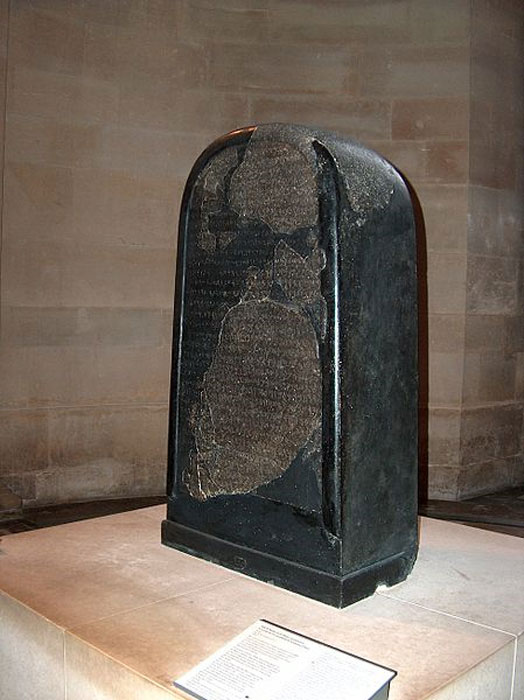
This 2,800YearOld Stele Tells A Bible Story From A Different Point Of
The Moabite Stone, also known as the Mesha Stone, contains an ancient inscription of Mesha, the king of Moab dating back to the late ninth century B.C., whose elements correspond to the events narrated in the Hebrew Bible.

New reading of the Mesha Stele inscription has major consequences for
The Mesha Stele and "House of David" take center stage yet again. In the Winter 2022 issue of Biblical Archaeology Review, André Lemaire and Jean-Philippe Delorme examined the possible reference to the dynasty of King David of the Bible in the Mesha Stele, a Moabite inscription from the ninth century BCE.Their article, "Mesha's Stele and the House of David," explored new.

The Mesha Stele in its current location. The brown fragments are pieces
One of the most exceptional biblical archaeology artifacts ever found, the three-foot-tall Mesha Stele contains a 34-line inscription celebrating the Moabite vassal king Mesha 's rebellion against the Israelites. Renowned epigrapher André Lemaire identified in line 31 of the ninth-century B.C.E. stele the phrase בת [ד]וד ( bt [d]wd.